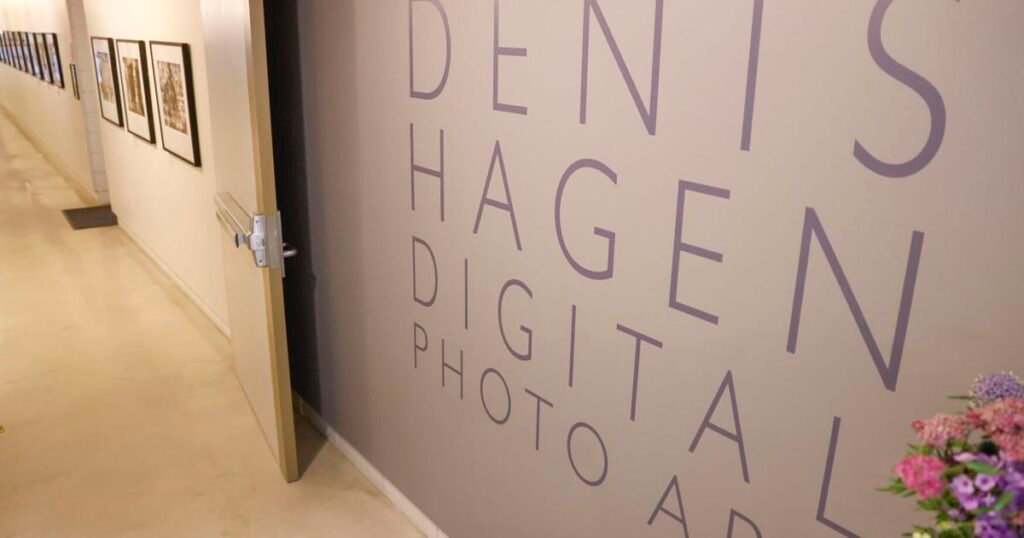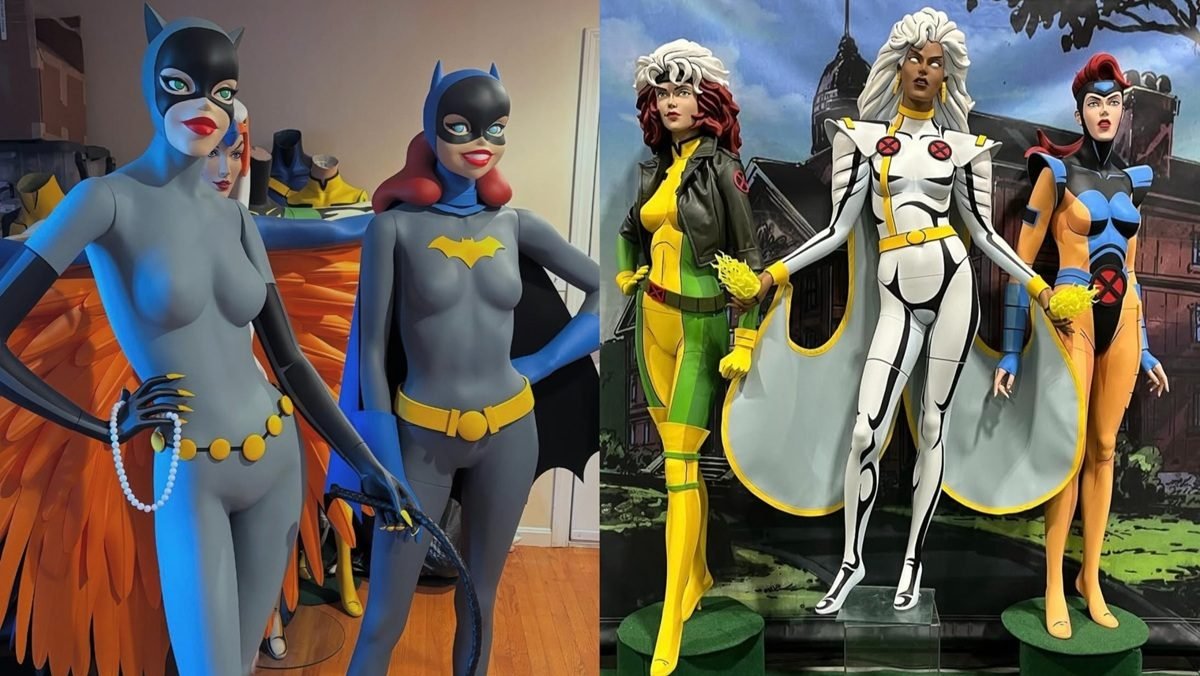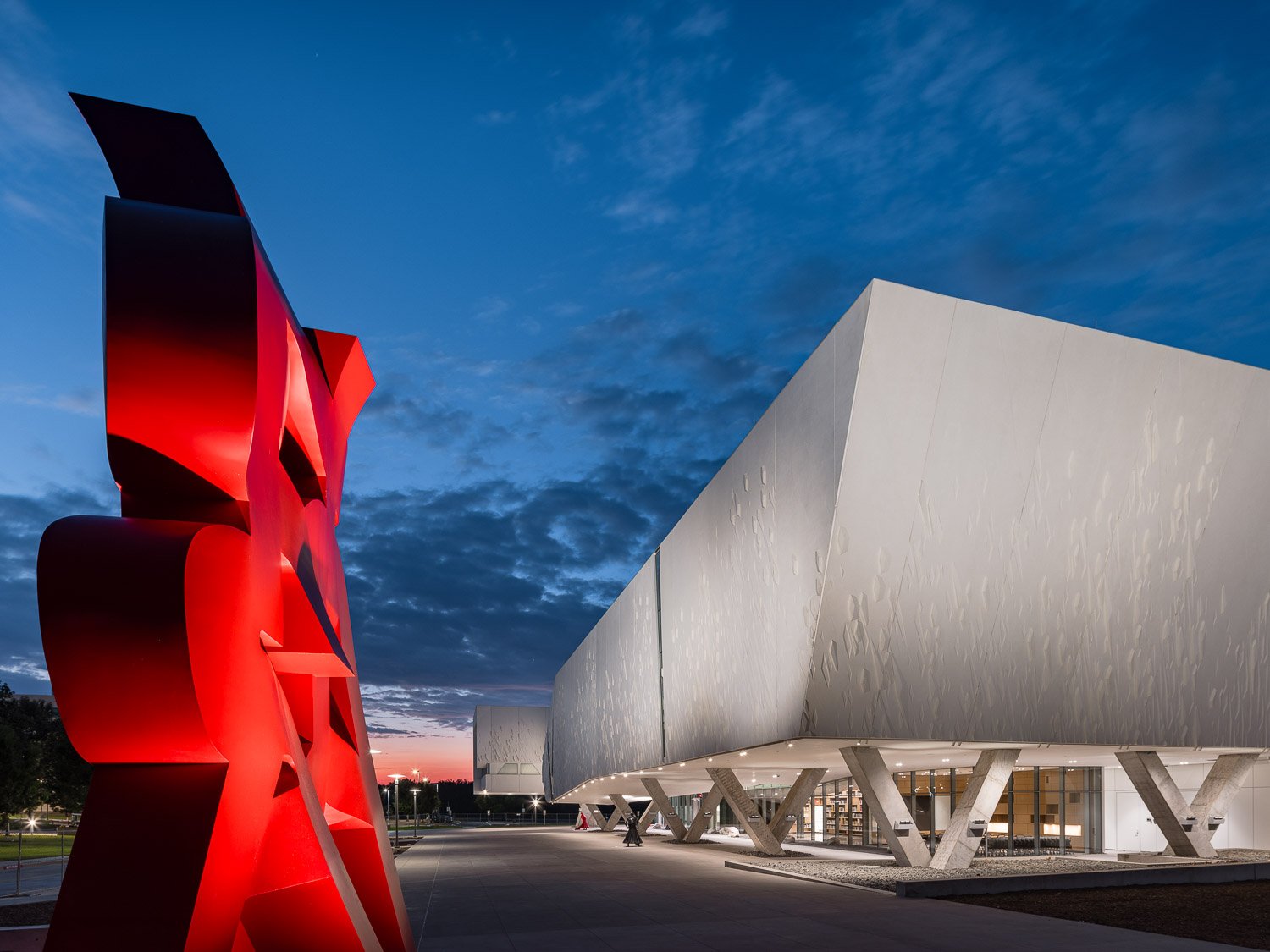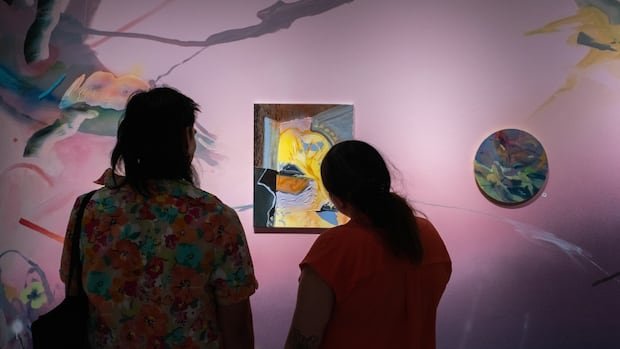WATERLOO — Denis Hagen sums up his artistic style with one simple sentence: “I like to put things together and see what happens.”
The digital photography artist layers and manipulates his images in Photoshop, invariably transforming them into abstract digital composites that only vaguely resemble traditional photography.
For Hagen, his work is a journey of discovery.
“I don’t really think about subject matter or environment. I don’t mind if a photo is out of focus. I just work at putting things together so I can be surprised by the results. Hopefully, I’ll see something I’ve never seen before,” said the Hiawatha-based artist.
A collection of his work, “Denis Hagen: Digital Photo Art,” is now on display in the Langlas Loft Galleries at the Waterloo Center for the Arts.
People are also reading…
Some viewers have compared Hagen’s work to lithography, likely because a lithograph print can closely resemble a painting. Hagen invites viewers to interpret and unravel the mysteries within his intriguing pieces.
In his previous, lengthy career as an art/creative director for advertising agencies in Chicago, Omaha and Cedar Rapids, Hagen said “photography has to be super-crisp and clean to survive the production and printing process. The image has to reveal itself instantly.
“In fine art, I don’t have to explain my images. I let other people figure it out.”
The artist is pushing “the boundaries of digital photography in the post-photographic stage,” said WCA Executive Director Chawne Paige. “Something interesting, almost otherworldly, happens when he plays with images and layering. The results are very elegant. His art is deep – viewers can get lost in it.”
Hagen works with whole digital photos in Photoshop, layering, opaquing, reversing and manipulating as few as four or as many as 12 photos in each composite. He has no preconceptions or objectives about the results.
“I have 3,000 or more photos in my files. What are the odds that you can find the right six or seven to fit together to make an image you want to print? There doesn’t seem to be a formula. Because it’s Photoshop, you can work individually with each layer – make it opaque or transparent. One thing that is consistent is the top layer, which is the most transparent because I want to see down into the layers.
And he always works in color. “I start that way, and visually, if I can’t get the colors to work, I’ll go to black and white. If you’re layering lots of colors, you can end up with a color that looks like mud,” he explained.
The artist described himself as a “fish out of water and very low tech” when he went back to school to learn Photoshop.
“All of my classmates grew up with computers. It took a while for me to learn and a lot of different classes. I still still work with the basics in Photoshop. It’s all I need for my work.”
Hagen said the creative process is absorbing.
“I can start on something, then look at my watch and it’s three in the morning. A lot of these pieces take years to create because I’ll run into a brick wall and don’t know what to do, or I don’t like the print. I just keep trying.”
Gallery hours are 10 a.m. to 5 p.m. Tuesday through Saturday and 1 to 4 p.m. Sunday. Admission is free. The Waterloo Center for the Arts is located at 225 Commercial St.
A look at Pulitzer Prize-winning photography from the Associated Press

Bystanders watch as police walk down a street May 28, 2020, in St. Paul, Minn. Protests over the death of George Floyd, a black man who died in police custody, broke out in Minneapolis for a third straight night. The image was part of a series of photographs by The Associated Press that won the 2021 Pulitzer Prize for breaking news photography. (AP Photo/John Minchillo)

A protester carries a U.S. flag upside down, a sign of distress, next to a burning building, May 28, 2020, in Minneapolis. Protests over the death of George Floyd, a black man who died in police custody, broke out in Minneapolis for a third straight night. The image was part of a series of photographs by The Associated Press that won the 2021 Pulitzer Prize for breaking news photography. (AP Photo/Julio Cortez)

Police officers and protesters clash near CNN Center, May 29, 2020, in Atlanta, in response to George Floyd’s death. The protest started peacefully earlier in the day before demonstrators clashed with police. The image was part of a series of photographs by The Associated Press that won the 2021 Pulitzer Prize for breaking news photography. (AP Photo/Mike Stewart)

A protester raises her fist in the air next to a burning police vehicle in Los Angeles, May 30, 2020, during a demonstration over the death of George Floyd. The image was part of a series of photographs by The Associated Press that won the 2021 Pulitzer Prize for breaking news photography. (AP Photo/Ringo H.W. Chiu)

A demonstrator stares at a National Guard solider as protests continue over the death of George Floyd, June 3, 2020, near the White House in Washington, D.C. The image was part of a series of photographs by The Associated Press that won the 2021 Pulitzer Prize for breaking news photography. (AP Photo/Alex Brandon)

Protesters gather in front of a burning fast food restaurant, May 29, 2020, in Minneapolis. Protests over the death of George Floyd, a black man who died in police custody, broke out in Minneapolis for a third straight night. The image was part of a series of photographs by The Associated Press that won the 2021 Pulitzer Prize for breaking news photography. (AP Photo/John Minchillo)

A demonstrator hides under a barrier as federal officers release tear gas during a Black Lives Matter protest at the Mark O. Hatfield United States Courthouse, July 29, 2020, in Portland, Ore. The image was part of a series of photographs by The Associated Press that won the 2021 Pulitzer Prize for breaking news photography. (AP Photo/Marcio Jose Sanchez)

Protesters raise their hands on command from police as they are detained prior to arrest and processing at a gas station on South Washington Street, May 31, 2020, in Minneapolis. The image was part of a series of photographs by The Associated Press that won the 2021 Pulitzer Prize for breaking news photography. (AP Photo/John Minchillo)

A Black Lives Matter protester burns a sign outside the Mark O. Hatfield United States Courthouse on July 21, 2020 in Portland, Ore. The image was part of a series of photographs by The Associated Press that won the 2021 Pulitzer Prize for breaking news photography. (AP Photo/Noah Berger)

New York police officers arrest people inside a vandalized Balenciaga store in New York, June 2, 2020, during street protests over the death of George Floyd. The image was part of a series of photographs by The Associated Press that won the 2021 Pulitzer Prize for breaking news photography. (AP Photo/Frank Franklin II)

Demonstrators vandalize a car as they protest the death of George Floyd, May 31, 2020, near the White House in Washington, D.C. Floyd died after being restrained by Minneapolis police officers. The image was part of a series of photographs by The Associated Press that won the 2021 Pulitzer Prize for breaking news photography. (AP Photo/Evan Vucci)

An American flag falls from its pole as police attempt to secure the area after protesters set fire to the department of corrections building, Aug. 24, 2020, in Kenosha, Wis. Protests have erupted following the police shooting of Jacob Blake a day earlier. The image was part of a series of photographs by The Associated Press that won the 2021 Pulitzer Prize for breaking news photography. (AP Photo/David Goldman)

A protester, center, tries to stop others from attacking a police vehicle during a protest over the death of George Floyd in Los Angeles, May 30, 2020. The image was part of a series of photographs by The Associated Press that won the 2021 Pulitzer Prize for breaking news photography. (AP Photo/Ringo H.W. Chiu)

Demonstrators protest, June 4, 2020, near the White House in Washington, D.C., over the death of George Floyd. The image was part of a series of photographs by The Associated Press that won the 2021 Pulitzer Prize for breaking news photography. (AP Photo/Evan Vucci)

Police surround demonstrators in Times Square during a protest march, June 4, 2020, in New York. The image was part of a series of photographs by The Associated Press that won the 2021 Pulitzer Prize for breaking news photography. (AP Photo/John Minchillo)

Josefa Ribas, 86, who is bedridden, looks at nurse Alba Rodriguez as Ribas’ husband, Jose Marcos, 89, stands by in their home in Barcelona, Spain, March 30, 2020, during the coronavirus outbreak. Ribas suffers from dementia, and Marcos fears for them both if the virus enters their home. “If I get the virus, who will take care of my wife?” The image was part of a series by Associated Press photographer Emilio Morenatti that won the 2021 Pulitzer Prize for feature photography. (AP Photo/Emilio Morenatti)

A woman sits on her balcony in downtown Barcelona, Spain, May 7, 2020. The image was part of a series by Associated Press photographer Emilio Morenatti that won the 2021 Pulitzer Prize for feature photography. (AP Photo/Emilio Morenatti)

Nurse Marta Fernandez holds up a tablet computer over the chest of 94-year-old Maria Teresa Argullos Bove so that she can speak to her sister, children and grandchildren from her hospital bed at the COVID-19 ward at the hospital del Mar in Barcelona, Spain, Nov. 18, 2020. The image was part of a series by Associated Press photographer Emilio Morenatti that won the 2021 Pulitzer Prize for feature photography. (AP Photo/Emilio Morenatti)

Wearing protective suits to prevent infection, mortuary workers move the body of an elderly person who died of COVID-19 from an elevator after removing it from a nursing home in Barcelona, Spain, Nov. 13, 2020. The image was part of a series by Associated Press photographer Emilio Morenatti that won the 2021 Pulitzer Prize for feature photography. (AP Photo/Emilio Morenatti)

Residents look at the street through a window at the Icaria nursing home in Barcelona, Spain, Nov. 25, 2020. The image was part of a series by Associated Press photographer Emilio Morenatti that won the 2021 Pulitzer Prize for feature photography. (AP Photo/Emilio Morenatti)

A patient infected with Coronavirus rests in a chair inside an isolated room at the COVID-19 ward of a public hospital in Barcelona, Spain, Nov. 18, 2020. The image was part of a series by Associated Press photographer Emilio Morenatti that won the 2021 Pulitzer Prize for feature photography. (AP Photo/Emilio Morenatti)

The body of an elderly person is prepared inside a coffin for her funeral at a morgue in Barcelona, Spain, Nov. 5, 2020. The image was part of a series by Associated Press photographer Emilio Morenatti that won the 2021 Pulitzer Prize for feature photography. (AP Photo/Emilio Morenatti)

The body of an elderly person who died of COVID-19 is covered with a sheet on her bed in a nursing home in Barcelona, Spain, Nov. 13, 2020. The image was part of a series by Associated Press photographer Emilio Morenatti that won the 2021 Pulitzer Prize for feature photography. (AP Photo/Emilio Morenatti)

A mortuary worker collects the ashes of a COVID-19 victim from an oven after the remains where cremated at Memora mortuary in Girona, Spain, Nov. 19, 2020. The image was part of a series by Associated Press photographer Emilio Morenatti that won the 2021 Pulitzer Prize for feature photography. (AP Photo/Emilio Morenatti)

Francisco España, 60, looks at the Mediterranean sea from a promenade next to the “Hospital del Mar” in Barcelona, Spain, Sept. 4, 2020. Francisco spent 52 days in the ICU of the hospital due to an infection of Coronavirus and he has being allowed by his doctors on this day to spend almost ten minutes at the seaside as part of a therapy to recover from the ICU. The image was part of a series by Associated Press photographer Emilio Morenatti that won the 2021 Pulitzer Prize for feature photography. (AP Photo/Emilio Morenatti)

Mortuary workers take off their protective clothing at the entrance of a building decorated with a Christmas tree, after removing the body of person who is suspected of dying from COVID-19 in Barcelona, Spain, Dec. 23, 2020. The image was part of a series by Associated Press photographer Emilio Morenatti that won the 2021 Pulitzer Prize for feature photography. (AP Photo/Emilio Morenatti)

Agustina Cañamero, 81, hugs and kisses her husband Pascual Pérez, 84, through a plastic film screen to avoid contracting the coronavirus at a nursing home in Barcelona, Spain, June 22, 2020. Even when it comes wrapped in plastic, a hug can convey tenderness and relief, love and devotion. The fear that gripped Agustina Cañamero during the 102 days she and her 84-year-old husband spent physically separated during Spain’s coronavirus outbreak dissolved the moment the couple embraced through a screen of plastic film. The image was part of a series by Associated Press photographer Emilio Morenatti that won the 2021 Pulitzer Prize for feature photography. (AP Photo/Emilio Morenatti)

Álvaro Puig Moreno watches television while eating a his Christmas Eve dinner at his home in Barcelona, Spain, Dec. 24, 2020. “The solitude gets to me these days, I often feel depressed,” Puig said. “These holidays, instead of making me happy, make me sad. I hate them. Most of family has died, I am one of the last ones left. I will spend Christmas at home alone because I don’t have anyone to spend them with.” The image was part of a series by Associated Press photographer Emilio Morenatti that won the 2021 Pulitzer Prize for feature photography. (AP Photo/Emilio Morenatti)

A woman pushes a cart with her belongings as she walks along an empty street in downtown Barcelona, Spain, March 21, 2020. The image was part of a series by Associated Press photographer Emilio Morenatti that won the 2021 Pulitzer Prize for feature photography. (AP Photo/Emilio Morenatti)






